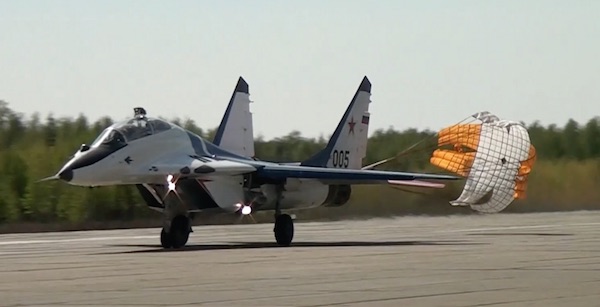Flying the Mig-29
On Monday the 25th of May 2015 I had enough luck to fly the Mig-29 for 45 minutes, one of the most powerful fighter jets ever built. Here are my notes about the experience. At the time of the flight, I had logged 201 hours of flight time, amongst them 3 hours of aerobatics training. One hour was done in a citabria, and two hours in an albatros L-39.
First of all, there is roughly only one legal way to do this as of this day, which is to go fly on the Russian city of Nizhny Novogorod. This industrial city situated 4 hours away from Moscow is the home of one of the Mikoyan factory, established in 1932 (aka Sokol Plant). It is still active as of today. This factory is home to an airfield and some airspace used for flight testing purposes. United States civilian flight operations forbid flights at speed greater or equal than Mach 1.0, which would make it impossible to enjoy the airplane at its fullest capacity.
Allow at least two months before the flight, for multiple reasons:
Preparation of your Russian passport.
Preparation of the authorization for your entrance on the high security facility.
I recommend arriving two days prior the flight. I arrived the day before which was a little bit short for preparations and such. If you are coming from a country with an important time difference you might find it difficult to adjust in only one day. One other option to make sure you are not going to be jet lagged is to visit Russia for a couple of days before the flight and to take this as an opportunity to adjust for the time difference.
Technicalities of the Mig-29
General Characteristics
Crew: 1
Length: 17.37 m (57 ft)
Wingspan: 11.4 m (37 ft 3 in)
Height: 4.73 m (15 ft 6 in)
Wing area: 38 m² (409 ft²)
Empty weight: 11,000 kg (24,250 lb)
Loaded weight: 15,300 kg (33,730 lb)
Max. takeoff weight: 20,000 kg (44,100 lb)
Powerplant: 2 × Klimov RD-33 afterburning turbofans, 8,300 Kgf (81.4 kN, 18,300 lbf) each
Fuel capacity: 3,500 kg. (7,716 lbs.) internal
Performance
Maximum speed: Mach 2.25 (2,400 kmh, 1,490 mph) At low altitude: Mach 1.25 (1,500 kmh, 930 mph)
Range: 1,430 km (772 nmi, 888 mi) with maximum internal fuel
Ferry range: 2,100 km (1,300 mi) with external drop tanks
Service ceiling: 18,013 m (59,100 ft)
Rate of climb: initial 330 ms average 109 ms 0–6000 m (65,000 ft/min)
Wing loading: 403 kgm² (82 lbft²)
Thrust/weight: 1.09
Maximum design g-load: +9g
Shedule of the day
7:30AM light breakfast
8:00AM driver pickup from the hotel to the factory
9:00AM cross multiple security checkpoints, first to enter the factory, second checkpoint to the airfield.
9:30AM arrive to the pilots building. Meet with Yuri Polyakov, the flight instructor, and the staff.
10:00AM medical tests/exam.
10:30AM mission brieffing with Yuri (see flight description for more details)
11:00AM oxygen mask fitting and training
11:15AM G-suit link to russian g suit fitting and training
11:30AM Drive to the airfield
11:35AM Preflight Checks
11:45AM Flight Instrument Brieffing
12:00PM Takeoff
12:45PM Landing
12:55PM Drive back to pilots building. Debrief, shower, rest.
01:30PM Lunch
02:15PM Visit of the factory Museum
03:30PM Drive back to Hotel.
Some pictures of before and after the flight
Flight
We pretty much flew what we agreed on during the preflight briefing. The temperature was high so we could not go as high as we would have wanted (the higher the temperature, the thiner the air, making it hard to trade speed for altitude). We agreed to proceed in three main phases: first go as high as possible to observe the earth curvature, then descend at FL230 for some maneuvers, then finally descend for some low altitude maneuvers close to the airbase.
The approach here is that the flight instructor shows the maneuvers, and I was in charge of reproducing them (some maneuvers were exclusively performed by the flight instructor).
Communication between pilots is done by pressing a button, which is pretty interesting, especially when the pilots asks you if you are ok while you can barely move your arm because it is 7x heavier than usual.
Now for some of the flight details:
Takeoff (rotation speed @ 260km/h)
Right Turn
Climb to FL400 ft (~12km)
Stabilize, Maneuvers (turns, steep turns)
Turn on afterburners
Increase speed to mach 1.7 (2080.80 km/h)
Climb to FL600 ft (tradeoff speed for altitude)
Enjoy the view.
Turn
Descent to FL230 (7000m) at 60 m/s
Maneuvers:
Reverse turn
Orbit around the base
Fly back to airfield
Low altitude flight. Low pass and stall turn were performed by instructor only because I was not quite ready for these.
Low pass (15m)
Hammerhead AKA Stall Turn (0g):
Inverted flight (-1g)
Steep turns (up to +7g)
Steep turns
Landing is assisted with a parachute:
 |
Videos
Whole flight in 3 minutes
Takeoff
High Altitude Flight
Inverted Flight/Low pass
HammerHead
Landing
FAQ
Which kind of training is necessary?
No specific training is necessary to fly such a airplane. Flying in this machine can be as smooth as a regular commercial flight. You might find it boring though. There are two main kind of training that can benefit you:
Physical training in order to hold greater maneuvers (I would personally recommend cardio + weight a couple of times a week for 3 months before flight)
Some aerobatics training will definitely allow you to enjoy the experience